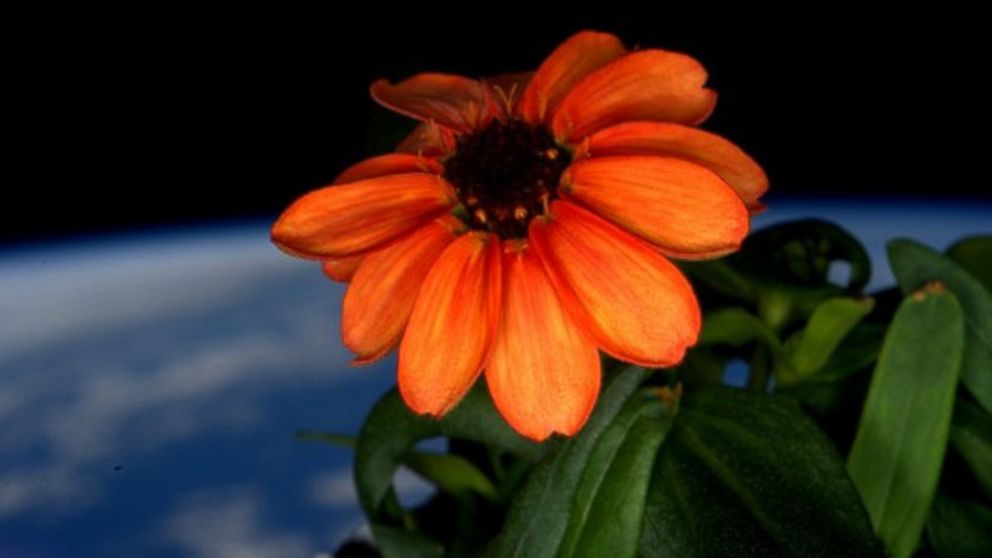The First Zinnia Flower Has Blossomed in Space: What It Means for a Mission to Mars
Astronaut Scott Kelly has been gardening at the International Space Station.

— -- Astronaut Scott Kelly's moldy flowers are doing their part to help a future mission to Mars.
Understanding how plants grow in space will be vital to future long-haul missions -- such as one to Mars -- because astronauts will have to grow some of their own food. Kelly, who is toward the end of his scheduled year in space, has been busy tending to a garden on board the International Space Station.
In December, he shared a photo of a space oddity -- his moldy zinnia flowers. This month, Kelly shared a photo of one of the flowers that bloomed into a vibrant flower with orange petals.
Gioia Massa, NASA's science team lead for the "Veggie" project, said the plants grown in space haven't been perfect but have allowed scientists on Earth to gain new insights into how plants grow in a microgravity environment.
"I think we have gained a lot from this, and we are learning both more about plants and fluids and also how better to operate between ground and station," Massa said in a statement. "Regardless of final flowering outcome we will have gained a lot."
In August of last year, the astronauts took their first bite of "Outredgeous" red romaine lettuce grown in space. It was the first time astronauts had sampled the produce from their space garden.
“We’re going to have to have a spacecraft that is much more self sustainable with regards to its food supply," Kelly said last year, explaining the importance the produce experiment will have on a potential future trip to Mars. "There's going to be a long period of time when we’re going to have to be completely self sufficient."




